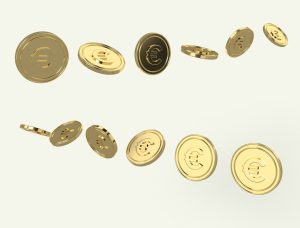Forex trading is one of the most popular forms of trading around the world. It is a market where currencies are traded, and traders can make profits by predicting the future movements of currency prices. Forex trading is known for its high leverage, which allows traders to control large amounts of currency with a small investment. However, what leverage should traders use for forex trading? This article will explore different leverage options and their advantages and disadvantages.
Leverage is the ratio between the amount of money that a trader can control and the amount of money that they invest. In other words, leverage is the amount of money that a broker loans to a trader to trade with. Forex brokers offer different levels of leverage, ranging from 1:1 to 1:500 or even higher. The higher the leverage, the more money a trader can control with a small investment.
However, leverage is a double-edged sword. While it can magnify profits, it can also magnify losses. If traders use high leverage and the trade goes against them, they can lose more money than they invested. Therefore, traders should carefully consider their leverage options and choose the right leverage for their trading strategy.
1:1 Leverage
1:1 leverage means that traders can control the same amount of money that they invest. In other words, they trade with their own money without any additional leverage from the broker. 1:1 leverage is the safest option for forex trading, as traders cannot lose more money than they invest. However, it also means that traders cannot make significant profits from small investments. For example, if a trader invests $100 and the currency pair they trade moves by 1%, they will only make $1 profit.
Low Leverage
Low leverage options, such as 1:10 or 1:20, are suitable for beginner traders who want to minimize their risk. With low leverage, traders can control larger amounts of currencies with a smaller investment. This means that traders can make more profits from smaller movements in currency prices. However, low leverage also means that traders cannot control as much money as with higher leverage options. Therefore, traders must carefully consider their trading strategy and set stop-loss orders to minimize their losses.
Medium Leverage
Medium leverage options, such as 1:50 or 1:100, are suitable for experienced traders who have a good understanding of the forex market. With medium leverage, traders can control larger amounts of currencies with a smaller investment. This means that traders can make more profits from smaller movements in currency prices. However, medium leverage also means that traders can lose more money if the trade goes against them. Therefore, traders must carefully consider their trading strategy, set stop-loss orders, and manage their risk.
High Leverage
High leverage options, such as 1:500 or even higher, are suitable for professional traders who have a lot of experience and knowledge of the forex market. With high leverage, traders can control large amounts of currencies with a small investment. This means that traders can make significant profits from small movements in currency prices. However, high leverage also means that traders can lose a lot of money if the trade goes against them. Therefore, traders must carefully consider their trading strategy, set stop-loss orders, and manage their risk.
Conclusion
In conclusion, choosing the right leverage for forex trading depends on the trader’s experience, knowledge, and risk tolerance. 1:1 leverage is the safest option, while low leverage is suitable for beginner traders who want to minimize their risk. Medium leverage is suitable for experienced traders who have a good understanding of the forex market, while high leverage is suitable for professional traders who have a lot of experience and knowledge of the forex market. However, traders must always manage their risk, set stop-loss orders, and have a clear trading strategy to succeed in forex trading.





